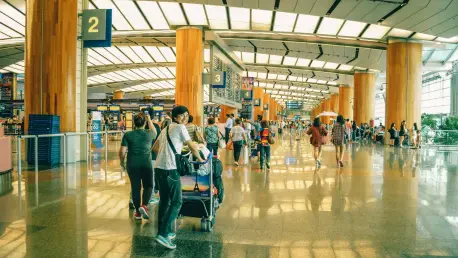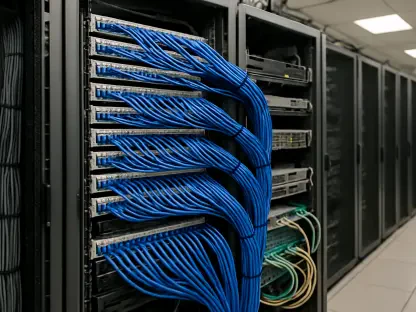Airports and airlines around the globe are increasingly relying on advanced technology to maintain seamless operations, especially in the face of unforeseen disruptions. While traditional networks remain integral to day-to-day connectivity, recent global events have exposed their vulnerabilities to outages caused by incidents such as fiber optic cuts or extreme weather conditions. SITA Managed Satellites presents a novel approach, offering a connectivity service that ensures airports and airlines remain consistently online, particularly during blackouts or in remote areas with limited infrastructure. This service highlights the pivotal role of satellite technology in keeping air transport operations resilient and efficient.
Satellite Connectivity for Airports and Airlines
Overcoming Network Vulnerabilities
SITA Managed Satellites, utilizing low Earth orbit satellites, delivers secure and reliable communication for air transport, bridging gaps posed by network failures. Airports and airlines can now harness these satellites for high-bandwidth and low-latency communications, offering uninterrupted service during varied calamities, including natural disasters. This solution is not confined by geography or infrastructure constraints, providing unmatched flexibility across over 130 countries. Whether it serves as a primary Internet source or a backup during emergencies, the versatility of satellite connectivity addresses multiple scenarios, enhancing operational stability and continuity.
The cutting-edge technology further supports off-airport locations and remote aircraft maintenance areas, ensuring consistent connectivity. Moreover, the service can be tailored for new route openings or seasonal operations, ensuring ground crews are never out of touch. By mitigating operational disruptions, airports and airlines can focus on their primary objective: ensuring passengers’ journeys are as smooth and seamless as possible. The managed satellite approach enhances operational resilience, enabling consistent communication even in regions lacking traditional network infrastructure.
Integration Within Network Models
The integration of satellite technology into existing high-availability network models marks a significant shift in operational strategy for airports and airlines. Martin Smillie from SITA vouches for the importance of this integration, citing the diverse range of challenges that can affect airport operations. By incorporating satellites, network reliability is fortified, making it feasible to maintain operations even when traditional networks falter. The focus is on creating a robust network infrastructure, not only to counteract disruptions but also to smooth operations during their occurrence.
Comprehensive support is a hallmark of the SITA Managed Satellites service, encompassing monitoring, installation, and maintenance. This integration with other connectivity services yields resilient network solutions tailored for the air transport sector’s unique needs. SITA’s role as a prominent IT provider in the industry enables it to support operational efficiencies on a global scale, connecting data exchanges for a vast portion of the air transport community. This approach ensures secure, seamless air travel, thus upholding the integrity of airport functions worldwide.
Future Considerations for Satellite Technology
Expanding Horizons Through Flexibility
Satellite technology is set to play an increasingly critical role in the air transport industry over the coming years, driven by its capability to provide reliable and secure connectivity under challenging conditions. The adaptability of this technology permits its use across various applications, from maintaining ongoing operations during emergencies to providing temporary connectivity solutions for airlines expanding their routes. As the demand for efficient and uninterrupted service continues to grow, leveraging satellite technology can be the key to meeting these operational challenges head-on.
Airports and airlines adopting satellite solutions gain a competitive advantage by ensuring service reliability, a priority for passengers and crews alike. Furthermore, the ability to provide consistent connectivity, irrespective of geographic or infrastructural constraints, can be a game-changer in navigating air transport industry dynamics. As new routes and operations evolve, satellite technology offers the flexibility and robustness required to support these dynamic changes.
Satellite Technology and Operational Efficiency
Around the world, airports and airlines are increasingly depending on advanced technology to ensure smooth operations, especially when unexpected disruptions occur. Traditional networks have long been crucial for daily communication and connectivity; however, their vulnerabilities have been highlighted by recent global events that have led to outages stemming from incidents like fiber optic cuts or severe weather. To address these challenges, SITA Managed Satellites offers an innovative solution. Their connectivity service keeps airports and airlines connected continuously, even during blackouts or in remote regions where infrastructure is limited. This underscores the essential role satellite technology plays in maintaining the resilience and efficiency of air transport operations. By providing a reliable alternative when traditional networks fail, satellites help aviation industries navigate disruptions, ensuring that operations can proceed unhindered, irrespective of location or unforeseen events.









